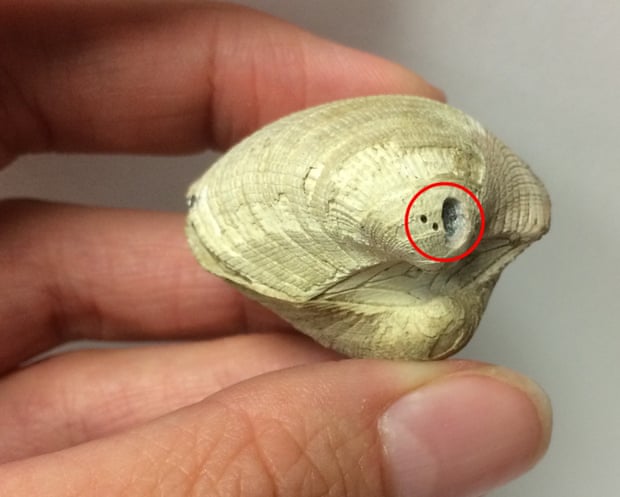Global warming implicated in dinosaur extinction
Posted on 13 July 2016 by howardlee
In a paper published on Tuesday in the journal Nature Communications, scientists from the University of Michigan and the University of Florida show that there were big jumps in climate warming when the dinosaurs went extinct at the end of the Cretaceous. This brings the end-Cretaceous mass extinction in line with the other mass extinction events, which occurred at times of abrupt and sometimes extreme climate change (including the end-Permian, the end-Triassic, the Toarcian, and others).
By employing a relatively new ancient-temperature-measuring technique called “carbonate clumped isotope paleothermometry,” scientists have uncovered an 8ºC jump in seawater temperatures that unfolded rapidly, at the same time as massive CO2 emissions from the Indian Deccan Traps eruptions (“rapidly” here means anything less than about 30,000 years, possibly centuries; such are the limits of time resolution). They also found a second, smaller spike in warming about 150,000 years later, at around the same time as the asteroid impact at Chicxulub in Mexico.

A mollusk that lived in Antarctica in the final years of the Cretaceous, showing the holes made by scientists extracting material to measure ancient sea temperatures. Photograph: Sierra V. Petersen
Each climate warming spike correlates with an episode of extinction identified in an earlier study led by Professor Tom Tobin of the University of Alabama.
“Our findings support the ‘press-pulse’ extinction mechanism,” said Doctor Sierra Petersen, referring to the theory that long-term environmental stress made life on Earth vulnerable to the shock of the asteroid impact. “The volcanism caused significant climate change, and the environmental stress from this climate change likely led to enhanced overall extinction.”
Petersen’s paper appears to contradict one published just a couple of weeks ago by James Witts of the University of Leeds and colleagues, who found there was one single, “sudden” (meaning within 30,000 to 70,000 years) extinction correlated with the asteroid impact, using fossils from the same place as Petersen gathered her specimens from – Seymour Island on the Antarctic Peninsula.
Petersen points out that Witts’ paper does show a small extinction episode correlating to the first temperature spike, whereas earlier studies found that the two extinction pulses were of roughly equal severity.
Unfortunately, the Witts paper only came out after our paper was already in production, so we could not add this discussion into our paper.
It’s curious that Petersen and her colleagues found a warming spike associated with the asteroid impact, when you might expect an asteroid impact to generate acooling spike from the “impact winter” triggered by all the sulfur and dust kicked up into Earth’s atmosphere. Indeed, Doctor Johan Vellekoop of the Catholic University of Leuven, Belgium, and colleagues have just published a paper claiming to have found “evidence of impact-provoked, severe climatic cooling immediately following the K-Pg impact” in sediments offshore New Jersey.
[Our] study does not have the resolution to observe the impact winter, which would only have lasted a few years at the most.
Such a transient cold snap would be hard-pressed to be recorded in ocean sediments at all, because of the huge thermal inertia of the world’s oceans, unless climate feedbacks amplified and sustained cooling for centuries.
Very close to the [end-Cretaceous] boundary we have some samples that are quite warm, nearly reaching the peak temperatures from the first warming spike. Other samples are colder, but all are taken from within 1 meter of the boundary and we cannot resolve their relative timing. Clearly climate was highly variable around this time.
Recent rock-dating work has suggested that the vast majority of the Indian lava (and by implication CO2 emissions) erupted as a consequence of the asteroid impact shaking up the magma plumbing beneath India. Petersen’s paper ties the first warming spike and extinction to the beginning of the Indian Deccan eruptions, with massive CO2 emissions concentrated in a timeframe of less than 200,000 years, before the asteroid impact.































 Arguments
Arguments






























Comments